Strength training is good for cyclists!
Part of Cycling Advice
Break the stigma, bust the myths, and get rid of the fear of lifting. Strength training will not make you too bulky, adding unnecessary muscle to a frame this is meant to be light and aero. Not only can strength training make you a faster cyclist, but it can also make you a stronger, healthier, and more robust human overall.
Here’s how.
Let’s get the fancy science-y stuff out of the way first. When strength training is paired with endurance training, the following physiological adaptations can occur and lead to increase power production on the bike:
- Increased force potential of type I muscle fibers (slow-twitch) which saves the type II muscle fibers (fast-twitch) for later. This leads to increased cycling efficiency
- An increased proportion of type IIA muscle fibers (fatigue-resistant) to type IIX fibers. Can lead to improved endurance performance
- Increased maximal force and improved blood flow to the exercising muscles, which can also lead to a reduced relative exercise intensity
- Recruiting a large amount of muscle mass can lead to a larger fractional utilization of VO2max, increased amounts of mitochondria, and a lower metabolic strain at a given exercise load
Not only can strength training make you a faster cyclist, but it can also make you a stronger, healthier, and more robust human overall.
Wow, that was a low of big words. To summarize: strength training can activate a number of physiological pathways and adaptations that endurance training alone cannot. These activations can lead directly to improved muscle force production and efficiency, in turn leading to improved cycling performance.
Strength training is an amazing tool for endurance athletes because it has both positive and negative effects on our bodies – remember, not all ‘negatives’ are bad!
As we’ve already seen, strength training can improve muscle recruitment and lead to increased cycling performance; but it can also be a crucial tool in injury prevention and increasing our athletic longevity.
Unfortunately, cycling (a non-impact activity) has been shown to decrease bone density, especially in the lower back region. Low bone density puts us at high risk for bone fractures, chronic back pain, stooped posture, and osteoporosis.
Not good.
But no need to fear – Strength Training is here! Studies have shown that strength training and weight lifting can help increase bone density. A well-rounded strength training program will target the hips, spine, and wrists, which are the areas most likely to fracture in a fall. The program should also focus on building power and balance to increase overall strength and stability, making us more confident as we get older or experience a fall.
Strength training works!
That sounds great and all, but what do I actually do? Do I just go into the gym once or twice a week, lift some weights for an hour, and call it good? Well, it’s a little more complicated than that.
Contents
What is Strength Training?
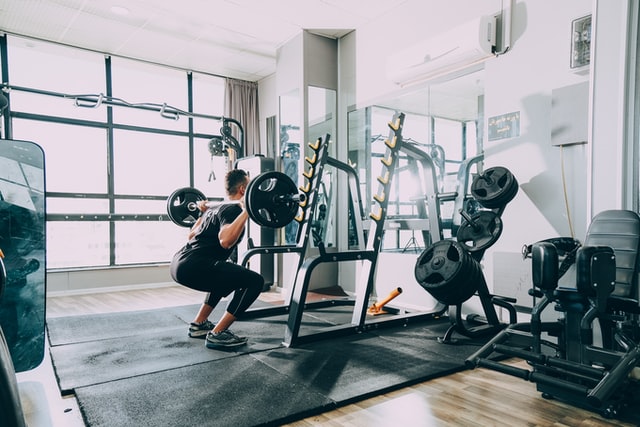
Strength training is an intentional physical exercise meant to increase strength or endurance. By definition, cycling is, in fact, a strength training exercise.
But for the purposes of this article, we will be looking at strength training as what it is most commonly known as weight lifting. There are too many facets of strength training to jam into this one article; so for this reason, we will be mainly focusing on strength training for cyclists.
When you first start strength training, you need to undergo a period of weight training lightly, which primes your body for the heavy loads ahead. This adaptation period typically lasts for about 6 weeks, which is the amount of time it takes your body to make the mind-to-muscle connection. You see, muscle contraction is as much about the brain as it is about the size of individual muscle fibers.
Crash Course on Muscle Activation
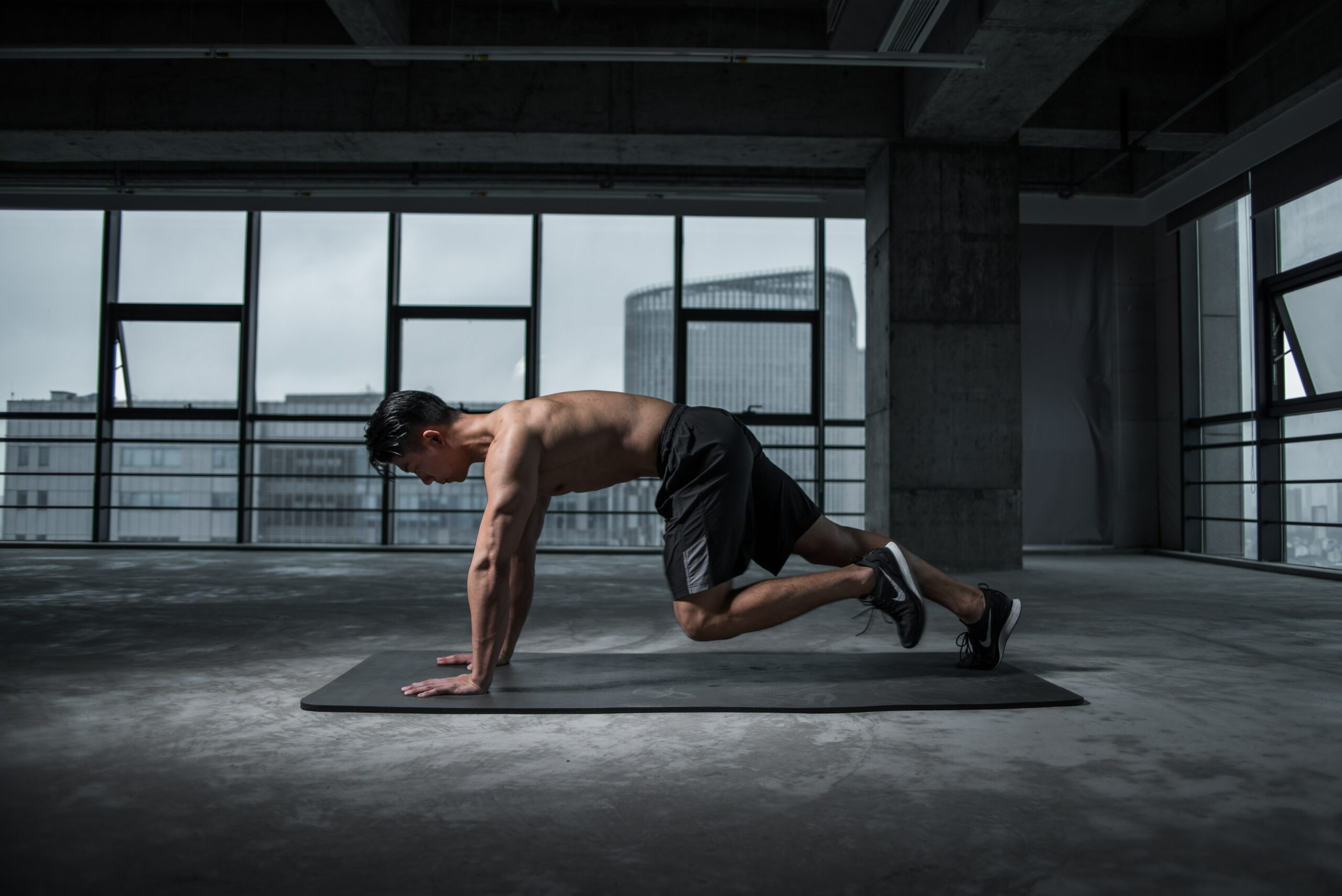
In order to flex your muscle, a message needs to be sent from the brain to that muscle. This is called a neurological signal.
Most of the time, we don’t flex our muscles to their full extent. Think about your bicep flexing to pick up a phone or a pen. And now think about your bicep flexing if you were trying to curl 100lb. dumbbell. Same muscle, big difference.
Now, it takes time to teach your muscles how to flex every single one of their fibers. If you’re not used to fully flexing them (i.e. you have never done strength training before), they have hundreds or thousands of unused muscle fibers that need to be woken up.
In roughly the first 6 weeks of strength training, most – if not all – of the strength gains you make will be thanks to neurological activation, not muscle hypertrophy. So in these first few weeks, lift light weights, and learn how to lift with perfect form.
This will teach your brain and your muscles the proper activation patterns so that when you move on to the heavier weights. You will be using your entire muscle, and getting the most out of each and every lift. Skip this adaptation period, and you not only will fail to lift properly, but you will be at a much greater risk for injury because of it.
Strength Training For Cyclists
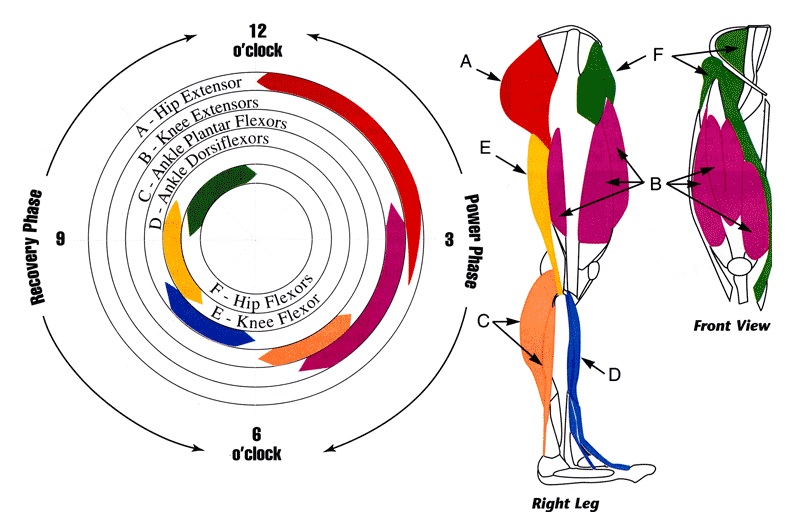
Cyclists should focus on a number of key exercises that target cycling-specific muscles such as the quadriceps, hamstrings, gastrocnemius (calf), hip flexors, and gluteus maximus. All of these muscles are directly involved in the pedal stroke – pushing, pulling, or both.
Related: Sweetspot vs Threshold Workouts – Which Is Better?
8 to 12 weeks of strength training 2-3 times per week is the minimum amount of time needed in order for cyclists to achieve strength gains. Target 2 to 3 sets of 6-10 reps per exercise, with 2-3 minutes of rest in between each set. For each weighted exercise, find a weight that is hard to lift by the second set, and very hard to lift by the third. If it is very hard to finish the first set, that weight is too heavy and you should go down a few pounds.
Now let’s get you in the gym!
A Sample Strength Training Session For Cyclists
 We divided this workout into two parts. The first focuses on the lower body, the second focuses on the core and upper body.
We divided this workout into two parts. The first focuses on the lower body, the second focuses on the core and upper body.
Before you get into the heavy lifting, it’s recommended that you perform a 5-10 minute warm-up prior to the main exercises of the session. This can be a general cardio warm-up such as walking, jogging, rowing, or even cycling.
Some coaches recommend a more thorough warm-up routine that includes dynamic exercises movements such as squats and lunges to prime your muscles for the movements ahead. This is most important for those of you lifting heavy weights or going for a 1R; i.e. Not most cyclists.
After warming up, it’s time to jump into the main set of exercises
First Part: Lower Body Exercises
- Squats: 3×8. Keep your chin up, and don’t let your knees bend much past 90 degrees
- Step-ups: 3×10 each side. With dumbbells in each hand, step up as hard as you can with each rep
- Bulgarian split squats: 3×10 each side. With dumbbells in each hand, keep your back straight, your front knee over your leading toe, and slowly lower your knee towards the ground with each rep
- Lateral lunges: 3×10 each side. Beginning without weights, carefully lunge down to your side in a controlled manner, and then explode back up towards the center
- Calf raises: 3×10. Start with both legs, and progress to single-leg calf raises
- Leg press (single-leg): 3×8. Start with both legs, and progress to single-leg press
- / 5 minutes rest
- Push-ups: 3 x max effort. Do as many reps as you can each set
- Planks: 3 x 30-second hold. Keep your back flat and squeeze those core muscles!
- Side plank rotations: 3×5 rotations on each side. Squeeze your arms and core and keep good balance
- Russian twists: 3×20 rotations. Hold a dumbbell or medicine ball to increase the intensity
- (assisted) Pull-ups: 3×5. Start with assisted pull-ups until you can do 5 reps without any help.
Some other great exercises for cyclists include: deadlifts, (walking) lunges, bent over rows, rowing machine, and the adductor/abductor machine.
Every 2-3 sessions, increase your workload by either increasing the number of reps, sets, or weight. Do not increase two or three of these factors in the same workout, as this will put at risk for injury and overtraining.
Related: How to Avoid Overtraining
Second part: The Core
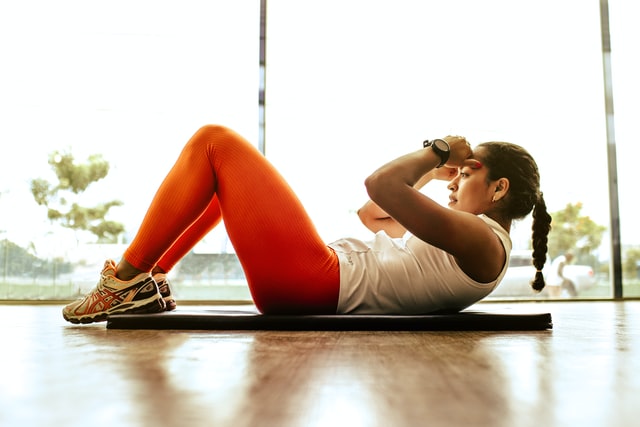
Good strength training programs focus on the core in addition to the upper and lower body. The ‘core’ is the area between the shoulders and hips and includes your abdominals, pectorals, obliques, lower back, and trapezius muscles. These muscles help stabilize the lumbar area, aid in balance and breathing, and are the source of all body movement. Without the core, we have nothing.
It is especially important to train the core for performance and injury prevention.
Are you looking to improve more? Read our article on how to improve your cycling.
Summary
- Strength training can make us stronger on the bike and off
- Strength training is one of the best tools for injury prevention
- Neurological activation before muscle hypertrophy
- Target cycling-specific muscles during strength training
- Perform 2-3 sets of 6-10 reps of each exercise, 2-3 times a week for the maximal amount of strength gains and adequate recovery
- Focus on the core!
Not sure how to start cycling? A Complete Guide to Cycling Workouts — On and Off the Bike


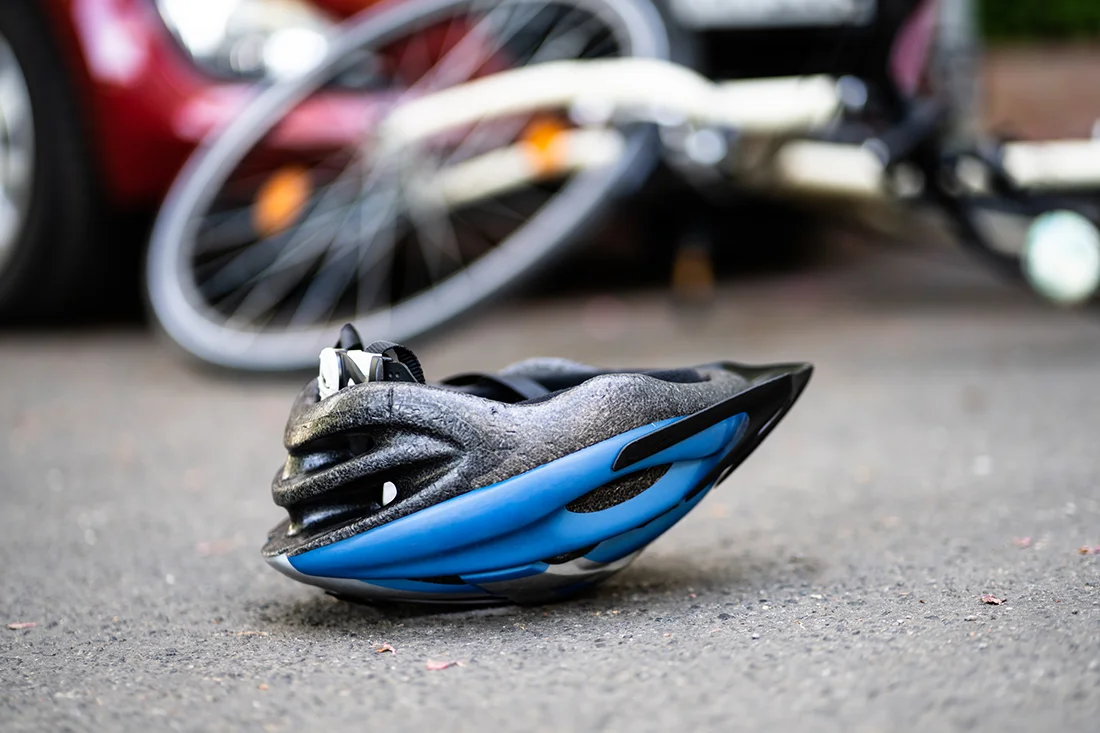
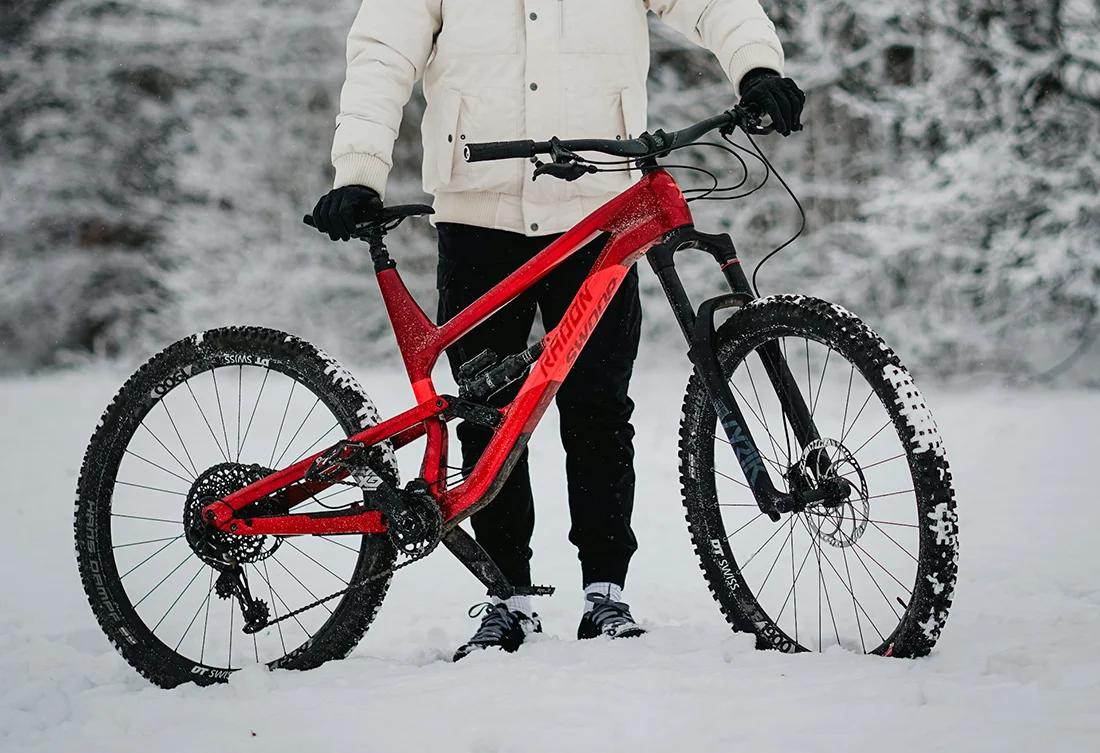
Thanks for explaining how endurance is also one of the important skills to have when it comes to cycling. I’d like to find a good cycle groups soon because I’m thinking about how I could stay fit as I grow older. Finding a fun way to exercise would be a good idea.